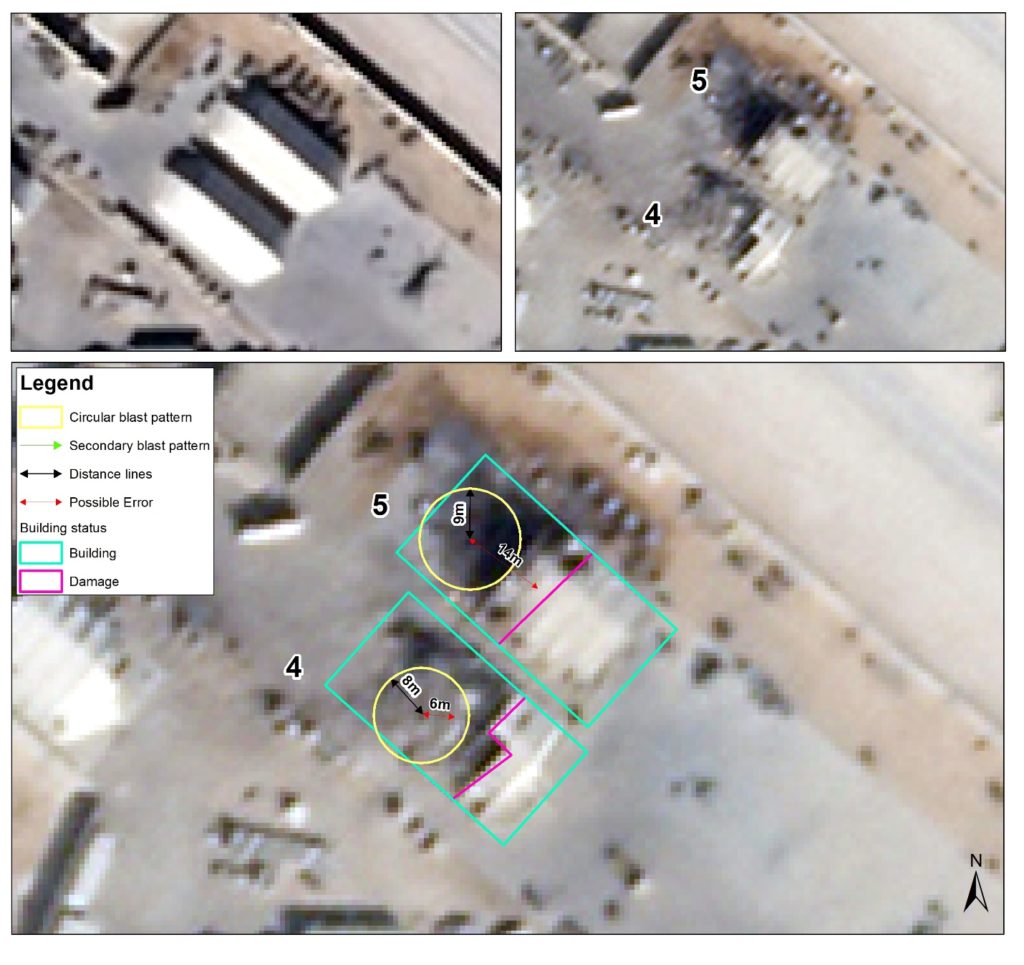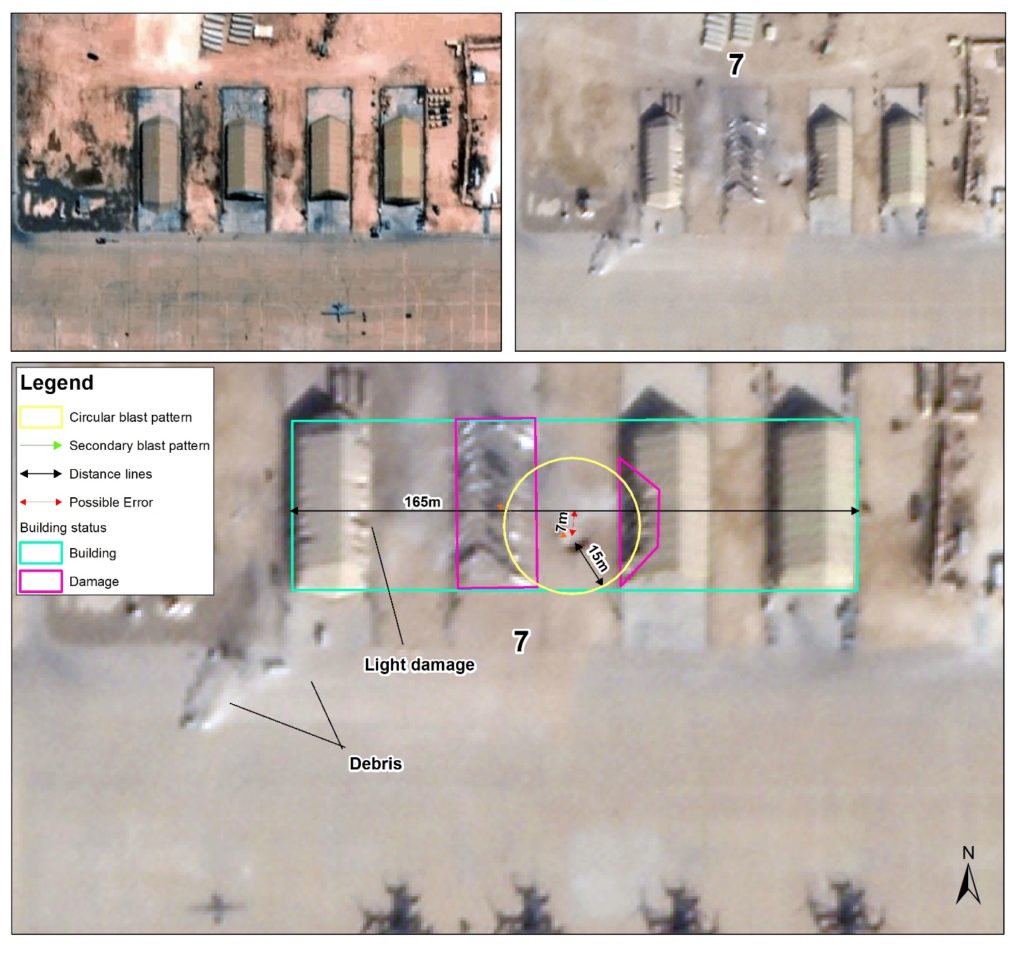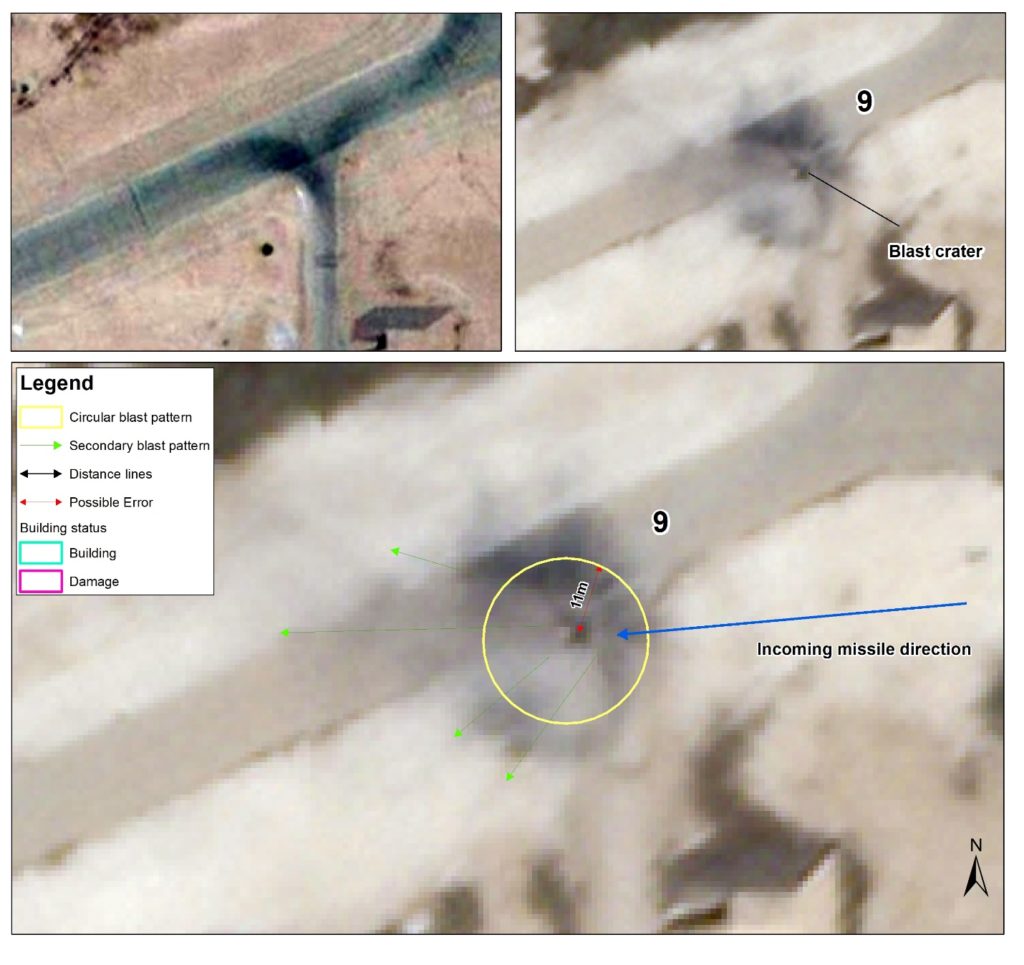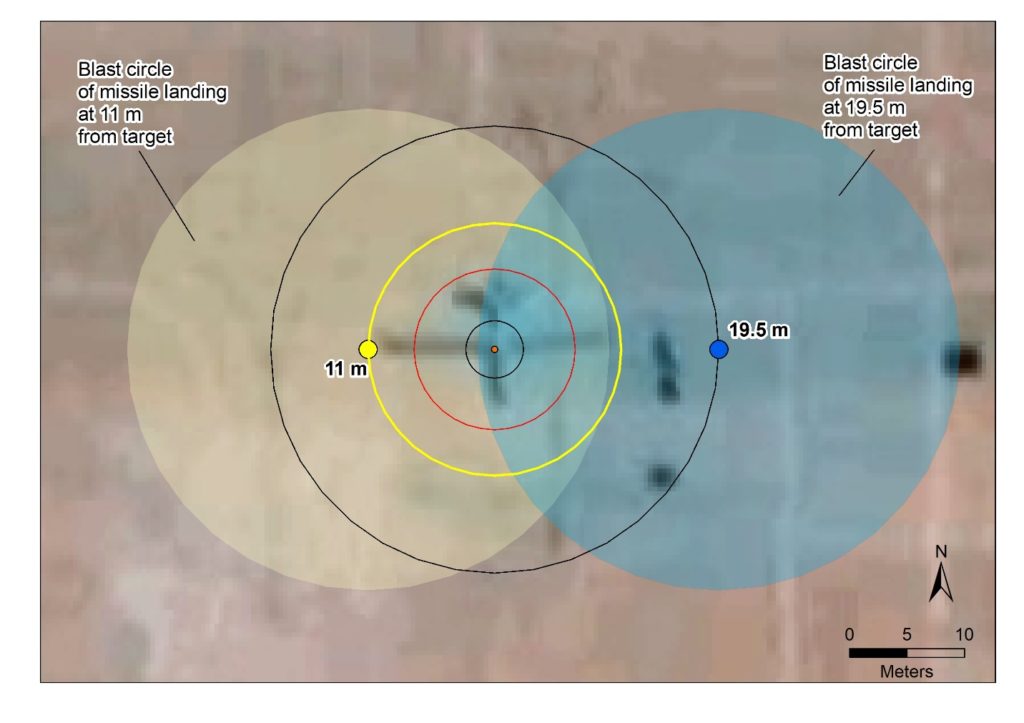
The United States released a previously unseen drone video showing the Iranian missile strike on US forces at the Ayn Al Asad Airbase in Iraq which took place on the 8th of January 2020 as a retaliation for the US assassination of the Iranian general Qassem Sulaimani.
How Precise Are Iranian Missiles? Analysis Of Missile Strikes On U.S. Military Base In Iraq (2020):
This video is based on the analysis of Haider Geoanalyst originally appeared on TheSaker.is
Several sources in the past weeks have analyzed the Iranian missile strikes on US forces at the Ayn Al Asad Airbase which took place more than two weeks ago on the 8th of January 2020 as a retaliation for the US assassination of the Iranian general Qassem Sulaimani.
In this analysis, the post-strike satellite imagery is assessed to give us some insights on what happened at the Ayn Al Asad Airbase and to estimate the accuracy of the Iranian missiles.
It is clear, even prior to conducting any analysis, that the Iranian missiles targeted individual structures with a high rate of accuracy. This analysis attempts to estimate the accuracy in terms of how far the missiles landed from their targets. Since the Iranians did not make public the targets they wanted to hit or destroy, it is assumed that the individual missiles were targeting the actual structures they destroyed or the nearest structures to their impact locations.
A term often used in precision guided munitions (artillery shells, smart-bombs, missiles, etc.) is the circular error probability (CEP). This value is not derived from actual warfare statistics but from weapons testing or claims from the weapons manufacturer. Instead of using the CEP, we will attempt to derive our own statistics from the small sample size of missile strikes.
Introduction to Ayn Al Asad Airbase
The US occupation forces between 2003 and 2005 changed the name of the airbase from its original 1980s name of Qadisiyah Airbase to the name of Ayn Al Asad, which in Arabic literally either means “Eye of the Lion” or in this case “Lion spring” due to the hydrological spring which is now located within the perimeter of the airbase. This spring feeds the Wadi al Asadi stream valley located in the northern part of the air base and flows eastwards into the Euphrates River as one of its tributaries. The main part of the base originally had a perimeter length of 21 km, not including other secondary or auxiliary bases located in the surrounding areas. The perimeter was expanded by the Americans to 34 km (Figure 1), giving the base a total area size of approximately 63 km2 and making it the largest military base in Iraq by area size. For comparison, this is almost twice the size of the New York City metropolitan area.

The base consists of two major runways (a third runway is unpaved), several taxiways, a variety of different facilities and buildings for personnel, equipment, communications, including sports and leisure centers with theaters and swimming pools. The base further has soft and hardened aircraft shelters (hangars). The trapezoidal shaped hardened aircraft hangers were built by Yugoslavian companies across many bases in Iraq in the 80s and are nicknamed “Yugos” by the Iraqis. The two hardened runways have a length of approximately 3,990 m. This is almost 1 km shorter than Iraq’s longest aircraft runway of 4,800 m located at Erbil airport, which is also one of the longest in the world. For further historical and general information on the Ayn Al Asad Airbase, see the following websites here ( https://en.wikipedia.org/wiki/Al_Asad_Airbase ), here ( https://www.globalsecurity.org/military/world/iraq/al-asad.htm ) and here ( https://www.airforce-technology.com/projects/al-asad-airbase-iraq/ ).
Reports indicate that around 15 to 16 missiles were fired from multiple locations inside Iran, with at least 10 missiles fired from bases in the Kermanshah area. If this is indeed the case and assuming a straight line flight path, the missiles could have traveled a distance of approximately 425 km from Kermanshah until reaching the Ayn Al Asad Airbase (Figure 2).

Airbase missile strike overview
In recent days, analysts have identified a total of nine separate missile impact strikes within the Ayn Al Assad Airbase perimeter. This does not exclude the possibility of other missile impact sites within the base’s perimeter which have not been identified or published online. Seven strikes (number 1 to 7) are found at the facilities located just above the northern taxiway and runway, which according to the imagery, houses a variety of drones and aircraft, including V-22 Ospreys, MQ-1 Predator drones, UH-60 Black Hawks and even (K)C-130 Hercules aircraft for transport and refueling. Another missile impact (number 8) is located on the taxiway between the two paved runways and impact number 9 is found on a taxiway in the southeastern complex of hardened aircraft hangars.

Site number 1 and 2
Strikes number 1 and 2 are approximately 110 m apart. Crater impact nr. 1 is 28 m away from the destroyed soft non reinforced target (possibly a tent structure). Nr. 1 has a small circular blast followed by a secondary semi-circle pattern. The secondary pattern towards the west also gives away the eastern incoming missile direction. Impact nr. 1 is peculiar since it is not a direct hit, but landed 28 m next to the nearest structure. The question is if the Iranians intentionally targeted this point or is it an accuracy issue (off by 28 m) ?
Strike nr. 2 has a similar sized crater and blast pattern as nr. 1 (approx. 27 to 28 m). So it is highly possible that both strikes were conducted using the same missile, with strike nr. 2 having a more obvious blast circle due to it landing exactly in the middle of a series of built soft structures (possible tents). From the measurements we can conclude that strike nr. 2 is more or less dead center on the 5 soft like tent structures and there is no substantial accuracy error.

Site number 3
Site nr. 3 contains two soft structures (possible tents). The missile’s crater and circular blast pattern is located almost in the center of the left building. If this building was deliberately targeted, the error is no more than 3 m. For comparison, this is the average accuracy of a handheld GNSS (GPS) device or a current smartphone, which is very impressive for a warhead landing at more than 2000 km/h (terminal velocity).

Site number 4 and 5
Sites 4 and 5 are two building (soft structures) next to one-another each hit with what seems to be similar type of missiles with primary blast radius of 8 to 9 m and secondary circles of around 20 to 22 m. If the center of the buildings were targeted, accuracy errors are 6 and 14 m for site 4 and 5, respectively. Again, we do not know if the Iranians deliberately targeted a certain part of the structures.

Site number 6
Strike 6 is located on the left side of a long metal roof soft structure, similar to a steel open warehouse. The left half of the building shows a primary blast circle of approximately 17 m in radius, with an overall damage radius of approximately 25 m. If we assume that the center of the building was the actual target, then we find an error of 51 m. Again, the question is whether the left side of this building was deliberately struck instead of the central part. It’s possible to assume that the Iranians intentionally targeted the western side of the building, having prior knowledge the blast radius of their missiles and the importance of the western side of the building.

Site number 7
Strike number 7 is the most easterly impact site and is found near the end of the northern runway. The impact is located almost exactly in the middle of four soft aircraft shelters. The post-strike image (taken a few hours after the event) shows V-22 Ospreys and MQ-1 predator drones parked just south of the shelters. The first circular blast pattern has a 15 m radius. The incoming direction of the missile caused the complete destruction of the adjacent shelter just left of the impact point, while the shelter to the right was lightly damaged. If we assume the Iranians were targeting the middle point of the second shelter (taken from left to right) than the accuracy error would be about 18 m. However, it is highly likely that the four soft shelters were targeted as a single unit. If that is the case, then the missile was only 7 m off (accuracy error) from the middle point.

Site number 8
If we assume that the Iranians are not randomly lobbing missiles inside the airbase with CEP errors of 100 to 500 m as some of the so called “think tank” experts presume (or have previously presumed in recent years), then we can assume that site nr. 8 was targeting the taxiway located between the two paved runways as previously shown in Figure 3. In the images below we can see an impact crater hitting the side of the taxiway. The impact is 23 m from the center of the taxiway pavement and we use this distance as a measure of accuracy. A clear circular blast pattern is visible and a directional blast cone indicates the incoming missile direction.

Site number 9
Strike nr. 9 is the second strike on a taxiway and is the most southern impact site situated in a hardened hangar complex. The impact crater is located almost exactly on one of the corner points of a paved T-junction. If the Iranians purposely targeted this exact point, then the accuracy error could possibly be no more than 2 meters. However, if the target was the actual center of the T-junction, then the error is approximately 11 m. Like in site nr. 8, we see a circular blast with a cone like fan shaped pattern giving the incoming missile direction.

Assessment and conclusions
There are different ways to assess the accuracy of these strikes based on the fact that we do not have the exact coordinates the Iranians wanted to target. It is not very realistic to assume that the Iranians were perfectly able to target the exact coordinates they intended to hit with perfect accuracy. There is however uncertainty in whether the Iranians intentionally missed some of their targets. The abovementioned observations clearly show a pattern of very accurate strikes on individually targeted buildings/structures. There are two most likely scenarios:
- The Iranians intentionally targeted and destroyed some targets. Accuracy errors occurred causing some missiles to miss the exact center point of their targets, with other targets being completely missed.
- The Iranians intentionally destroyed some targets and intentionally missed some others.
The table shows the estimated range in accuracy for each of the 9 strike locations based on our observations and interpretation. The green numbers are the most likely errors in meters, while red numbers indicating the less likely errors based on our assumptions of what the Iranians intended to target. An average missile target accuracy of 11 m is based on what are the most likely intended targets (or in other words the most likely scenario). The statistical spread of this small sample size (of only 9 strikes) is 8.5 m. So the lower and upper limits of the accuracy, based on the standard deviation, is estimated to range between 2.5 and 19.5 m. The median value, which is somewhat comparable to the CEP, is 7 m. This means that half of the strikes landed within 7 m. Finally, the average blast (damage) circle is estimated at 21 m.

Let’s visualize these numbers and assume that these numbers can be used in circles. The figure shows a MQ-1 predator drone theoretically being targeted. The yellow line indicates the 11 m mean accuracy value. This is where missiles will land on average. The red line gives the 7 m median value where 50 % of the strikes are found inside this circle. The subsequent figure also includes examples of blast circle (average radius of 21 m) locations in respect to the target.


Assuming the estimation of the intended targets and measurements are realistic, an Iranian missile accuracy ranging on average between 2.5 and 19.5 m is very impressive to say the least and indicates the use of advanced terminal guidance technology (guiding a missile in its terminal phase). Reports have suggested that the Fateh-313 tactical short range ballistic missile (SRBM) was used in the Ayn Al Asad Airbase attack, with other reports suggesting that the Qiam 1 was also used in the attack, including on Erbil Airport. The Fateh-313 is an upgraded Fateh-110, with an increased missile range up to 500 km. Terminal guidance technologies are most likely to be combined, including inertial guidance systems (INS), GNSS systems and possibly electro-optical guidance.
MORE ON THE TOPIC:
Filed under: American crimes, Iran, USA | Tagged: Iranian Strikes On US Bases, Suleimani’s Assassination |
Related posts:
Views: 0
 RSS Feed
RSS Feed

















 February 28th, 2021
February 28th, 2021  Awake Goy
Awake Goy  Posted in
Posted in  Tags:
Tags: 
















